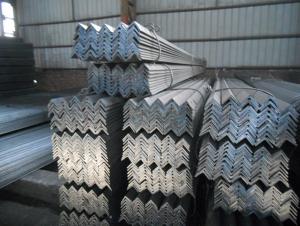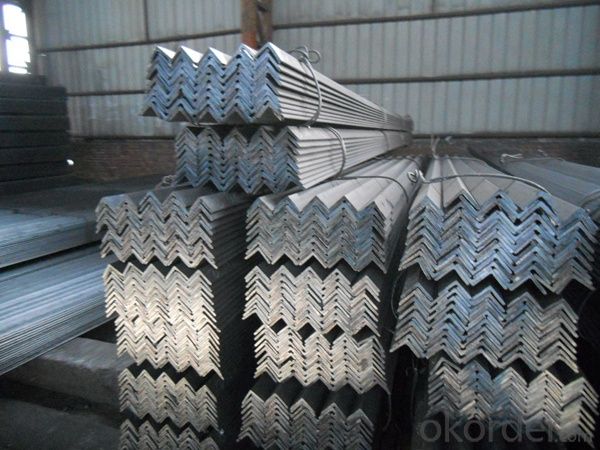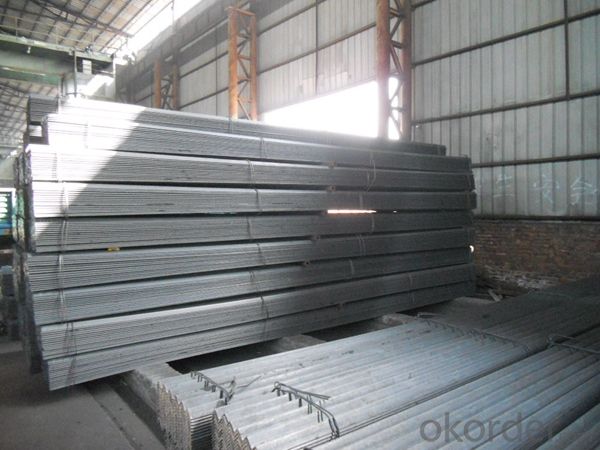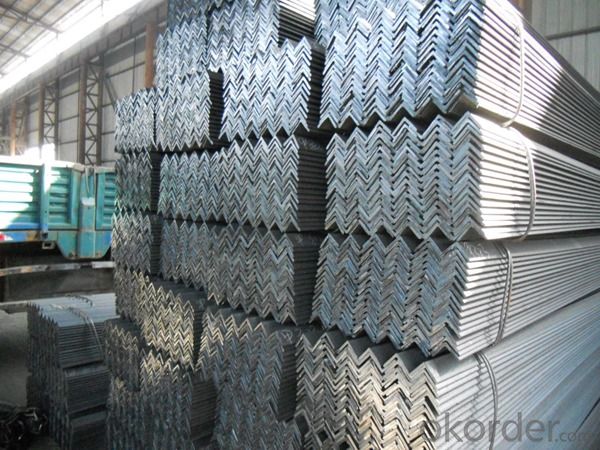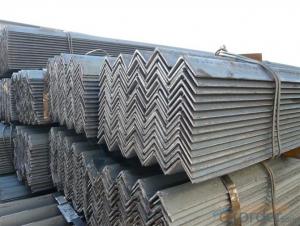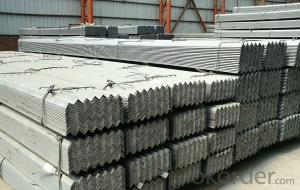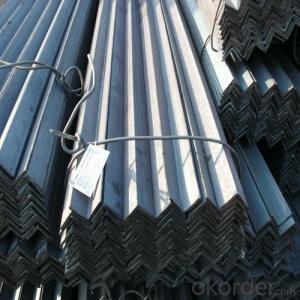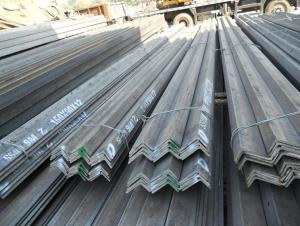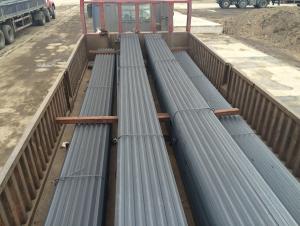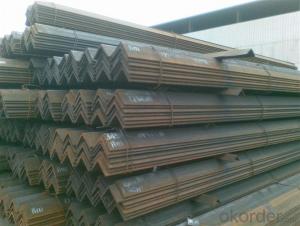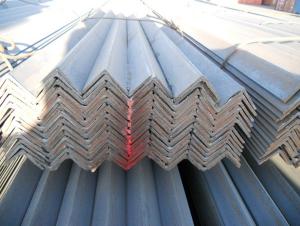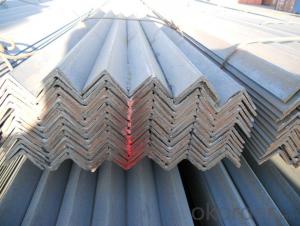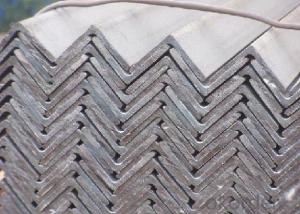Q345 angle, angle steel, galvanized angle steel
- Loading Port:
- Tianjin
- Payment Terms:
- TT or LC
- Min Order Qty:
- 25 m.t
- Supply Capability:
- 1000 m.t/month
OKorder Service Pledge
OKorder Financial Service
You Might Also Like
Specification
Product Description:
OKorder is offering Q345 angle, angle steel, galvanized angle steelat great prices with worldwide shipping. Our supplier is a world-class manufacturer of steel, with our products utilized the world over. OKorder annually supplies products to European, North American and Asian markets. We provide quotations within 24 hours of receiving an inquiry and guarantee competitive prices.
Product Applications:
Q345 angle, angle steel, galvanized angle steel are ideal for structural applications and are widely used in the construction of buildings and bridges, and the manufacturing, petrochemical, and transportation industries.
Product Advantages:
OKorder's Q235 Small angle, angle steel, galvanized angle steel are durable, strong, and resist corrosion.
Main Product Features:
· Premium quality
· Prompt delivery & seaworthy packing (30 days after receiving deposit)
· Corrosion resistance
· Can be recycled and reused
· Mill test certification
· Professional Service
· Competitive pricing
Product Description:
Angle called angle, the steel strip is perpendicular to each other on both sides into angular.Divided into equilateral angle steel and ranging from side angle. Two equilateral angle steel edge width is the same. The specification is expressed by edge width * width * thick edgenumber of millimeters. Such as "/ 30 x 30 x 3", namely that equilateral angle steel edge widthof 30 mm, 3 mm thick edge. Can also be used to model representation, model is the wideangle 3# cm, such as. The model does not represent the same type in different edge thickness size, thus in the contract and other documents on the angle of the edge width, edgethick size fill in complete, avoid alone represented by type. Hot rolled equilateral angle steelspecifications for 2#-20#. Angle according to the different needs of structure composed of a variety of stress components, can also be used as a component of the connections between the. Widely used in a variety of architectural and engineering structures, such as beams,bridges, towers, hoisting and conveying machinery, ships, industrial furnace, reactor,container frame and warehouse.
Mainly divided into equilateral angle steel, equilateral angle steel two categories, includingunequal angle can be divided into equal thickness and unequal thickness ranging from two.
Angle specifications with the side length of the size and edge thickness. At present, the domestic steel specifications for 2 - 20 cm in length, number of numbers, the same horn steel often have 2 - 7 different edge thickness. The actual size and inlet angle marked on both sides of the thickness and indicate the relevant standards. The general length of more than 312.5px for large angle steel, 312.5px - 125px for the medium angle, length of 125px for smallangle.
Inlet and outlet angle steel orders generally required the use specifications in the steel,carbon structural steel grades as appropriate. Is the angle in addition to standard number, nospecific composition and performance series.
Angle steel delivery length is divided into fixed length, size two, domestic steel length range is3 - 9m, 4 12M, 4 19m, 6 19m four range according to different specifications. Japanese steellength ranges from 6 to 15m.
Section of unequal angle height according to the long edge of the width to calculate the non equilateral angle steel. Refer to section angle and side length is not equal to the steel. Is a kind of angle steel. The length from 25mm * 16mm to 200mm * l25mm. By the hot rolling mill rolling in. General scalene angle steel specifications: thickness of 4-18mm / 50*32-- / 200*125
Equilateral angle steel is widely used in all kinds of metal structures, bridges, machinery manufacturing and shipbuilding industry, all kinds of architectural and engineering structures,such as beams, bridges, towers, hoisting and conveying machinery, ships, industrial furnace,reactor, container frame and warehouse etc.
FAQ:
Q1: Why buy Materials & Equipment from OKorder.com?
A1: All products offered byOKorder.com are carefully selected from China's most reliable manufacturing enterprises. Through its ISO certifications, OKorder.com adheres to the highest standards and a commitment to supply chain safety and customer satisfaction.
Q2: Can fit in the containers of 20fts the steel beams of 6M?
A2: No proble, we can put them into the containers in the form sideling.
Q3: The products are invoicing on theoritical weight or on actual weight?
A3: We can do it in both manners, according to the customers' request.
Images:
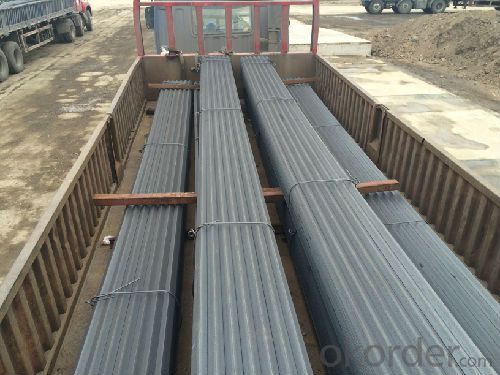
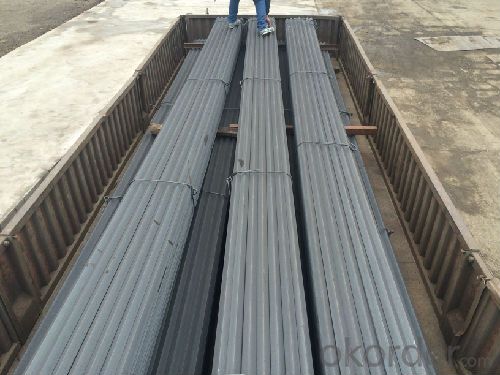
- Q: Can steel angles be used for modular furniture or fixtures?
- Certainly, modular furniture or fixtures can definitely utilize steel angles. These robust and adaptable structural components can be seamlessly incorporated into the design of modular furniture. They contribute stability and reinforcement to the overall structure, resulting in furniture pieces that are not only resilient but also long-lasting. Steel angles can serve as corner brackets or supports for shelves, cabinets, or other modular elements. They can be effortlessly tailored to meet specific design criteria through cutting, welding, or drilling, thus granting the freedom to create various configurations or sizes of modular furniture. Furthermore, steel angles can be powder coated or painted in a variety of colors to match the desired visual appeal of the furniture or fixtures. The utilization of steel angles in modular furniture or fixtures guarantees durability and longevity. They exhibit resistance to wear and tear, corrosion, and impact, rendering them suitable for both indoor and outdoor applications. Additionally, steel angles are readily available and cost-effective, making them a pragmatic choice for the manufacturing of modular furniture or fixtures. To summarize, steel angles are an outstanding option for the creation of modular furniture or fixtures due to their potency, versatility, and endurance. They lend stability and support to the structure, can be conveniently tailored, and deliver sustained performance. Whether for residential or commercial purposes, steel angles can be employed to fashion modular furniture or fixtures that are both functional and visually appealing.
- Q: What is the maximum length of a continuous steel angle?
- Several factors determine the maximum length of a continuous steel angle, including its size, weight, transportation and handling limitations. Typically, the maximum length is restricted to what can be safely transported and handled by equipment like cranes or forklifts. This limit can vary based on the capabilities of the equipment and any transportation restrictions. The manufacturing process may also limit the length, as longer angles may be more challenging to produce or require specialized equipment. Ultimately, the maximum length should be determined based on the project's specific requirements and constraints, taking into account these factors.
- Q: Can steel angles be used in mezzanine or raised platform constructions?
- Yes, steel angles can be used in mezzanine or raised platform constructions. Steel angles are versatile structural elements that can provide support and stability in construction projects. They are commonly used as framing members in mezzanine or raised platform structures due to their strength and load-bearing capabilities. Steel angles can be easily connected to other steel components, such as beams and columns, to form a rigid framework for the mezzanine or raised platform. Additionally, steel angles can be used to create bracing and reinforcement elements, enhancing the overall stability and safety of the structure. Overall, steel angles are a popular choice for mezzanine or raised platform constructions due to their durability, versatility, and cost-effectiveness.
- Q: What are the different surface finishes available for steel angles?
- There are several surface finishes available for steel angles, depending on the specific application and desired aesthetic. Some of the most common surface finishes for steel angles include: 1. Mill finish: This is the standard finish straight from the mill, with a smooth and clean surface. It is the most basic finish and is often used when appearance is not a significant factor. 2. Hot-dip galvanized: This finish involves immersing the steel angles in a bath of molten zinc, which creates a protective coating. It provides excellent corrosion resistance and is commonly used in outdoor or high-moisture environments. 3. Powder coated: In this process, a dry powder coating is applied electrostatically to the steel angles and then cured under heat. Powder coating offers a durable and attractive finish, with a wide range of colors and textures available. 4. Painted: Steel angles can also be painted with various types of paint, such as epoxy, enamel, or acrylic. Painting provides an additional layer of protection against corrosion and allows for customization in terms of color and appearance. 5. Stainless steel: Steel angles can be manufactured using stainless steel, which inherently provides a corrosion-resistant surface finish. Stainless steel angles are often used in applications where hygiene, durability, and aesthetic appeal are important, such as in food processing or architectural projects. 6. Shot blasting: This process involves propelling small steel shots at high velocity onto the surface of the angles. Shot blasting removes mill scale, rust, and other impurities, resulting in a clean, roughened surface that improves adhesion for subsequent coatings or paints. These are just a few examples of the different surface finishes available for steel angles. The choice of finish depends on factors such as the intended use, environmental conditions, desired appearance, and budget. It is important to consult with a steel supplier or manufacturer to determine the most suitable surface finish for a specific application.
- Q: What are the limitations of using steel angles in certain applications?
- One limitation of using steel angles in certain applications is their limited load-bearing capacity. Steel angles are typically used for lighter structural applications where the load is not too heavy. Another limitation is their susceptibility to corrosion, especially in environments with high moisture or chemical exposure. Additionally, steel angles may not be suitable for applications that require high precision or intricate designs, as they are limited in terms of shape and size options.
- Q: What are the common surface preparations for painting steel angles?
- Common surface preparations for painting steel angles typically include cleaning the surface to remove dirt, grease, and rust. This is followed by sanding or blasting to create a roughened texture for better paint adhesion. Finally, a primer is applied to protect against corrosion and provide a suitable base for the topcoat.
- Q: Can steel angles be used for playground equipment?
- Yes, steel angles can be used for playground equipment. Steel angles are commonly used for constructing various playground structures such as slides, climbing frames, and swing sets due to their durability, strength, and ability to withstand heavy use and outdoor elements.
- Q: What are the common shapes and dimensions of steel angles?
- The common shapes of steel angles include equal angles, unequal angles, and L-shaped angles. The dimensions of these angles can vary widely, but some common sizes include 1/2 inch, 3/4 inch, 1 inch, 1-1/2 inch, and 2 inches. The thickness or gauge of the angles can also differ, typically ranging from 1/8 inch to 1/4 inch.
- Q: What are the different types of steel angles used in automotive engineering?
- In automotive engineering, there are several types of steel angles that are commonly used. These angles play a crucial role in providing structural strength, improving stability, and enhancing the overall performance and safety of vehicles. Here are some of the different types of steel angles used in automotive engineering: 1. L-angles: L-angles, also known as unequal angles, are often used in automotive engineering to provide structural support and reinforcement. These angles have different lengths on each side, allowing them to be easily welded or bolted onto various components of a vehicle's chassis or frame. 2. T-angles: T-angles, also known as tee angles, are frequently used in automotive engineering to join two components together at a right angle. These angles are designed with a flat base and a vertical stem, which enables them to provide stability and hold different parts of a vehicle securely in place. 3. C-angles: C-angles, also known as channel angles, are commonly utilized in automotive engineering to form the framework for various vehicle structures. These angles have a U-shaped cross-section and are often used to create structural components like door frames, roof rails, and chassis reinforcements. 4. Z-angles: Z-angles, also known as Z-bar angles, are widely employed in automotive engineering to provide strength and rigidity to different vehicle structures. These angles have a Z-shaped cross-section, which allows them to resist bending and torsional forces effectively. Z-angles are often used in applications such as suspension systems, roll bars, and body components. 5. U-angles: U-angles, also known as U-bar angles, are commonly used in automotive engineering to provide support and reinforcement to various vehicle components. These angles have a U-shaped cross-section and are frequently utilized to create structural members like bumper beams, frame reinforcements, and roll cage bars. These are just a few examples of the different types of steel angles used in automotive engineering. Each angle has its own unique properties and applications, and their selection depends on the specific requirements of the vehicle design and the desired structural integrity.
- Q: Can steel angles be used as lintels or beams in construction?
- Steel angles can serve as lintels or beams in construction. These versatile structural elements lend support and strength to various kinds of structures. They are commonly utilized in construction projects due to their ability to bear heavy loads and resist bending or warping. When employed as lintels, steel angles are typically positioned horizontally above doors and windows to distribute the weight of the structure above and prevent sagging in the openings. As beams, steel angles can be employed to support floors, roofs, or other structural components. Their durability, versatility, and cost-effectiveness make them a popular choice compared to other materials. Nevertheless, it is crucial to seek advice from a structural engineer or construction professional to ensure that the specific steel angles being used are appropriate for the intended application and adhere to the necessary building codes and standards.
Send your message to us
Q345 angle, angle steel, galvanized angle steel
- Loading Port:
- Tianjin
- Payment Terms:
- TT or LC
- Min Order Qty:
- 25 m.t
- Supply Capability:
- 1000 m.t/month
OKorder Service Pledge
OKorder Financial Service
Similar products
Hot products
Hot Searches
Related keywords
